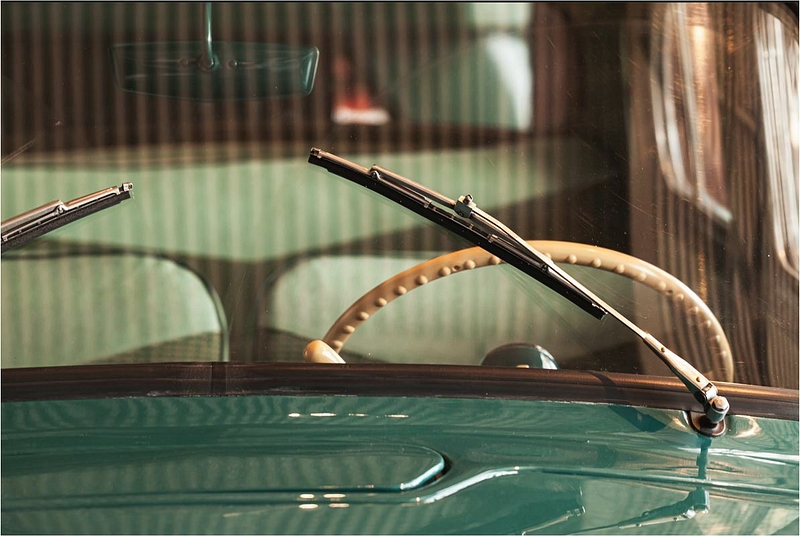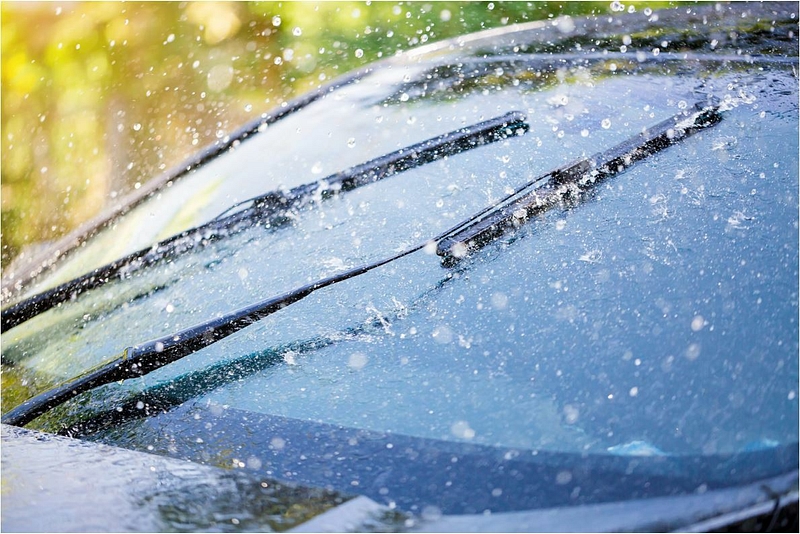Wiper blades past, present and future!

Although Mary’s system failed to take off, scroll forward another fifteen years and most production cars had a mechanism that although rudimentary, would be recognisable to drivers today, although they were initially manually operated. Over time, these gave way to vacuum and then electric motor driven versions and the basic rubber scraper evolved to become the modern wiper blade design that is so familiar today.
However, as with every field of engineering, nothing stands still and developments in design continue to progress to become the contemporary solutions of the day, and so it is with wiper blade technology, with flat blades constructed from a flat metal plate covered with a rubber shell to eliminate the possibility of water ingress, being the favoured solution for most vehicle manufacturers today.
As far as motorists are concerned, although many will be aware of this flat, frameless blade design, the conventional wiper with a metal frame and an accompanying strip of rubber to clear the surface of the windscreen, will be the most familiar. However, there is a third version, which combines the two designs and is therefore, logically, known as the hybrid blade.
The hybrid design retains the advantages of both conventional and flat versions using articulated joints and yokes that provide cushioning and a tight fit of the wiper blade to the glass.
Naturally, each type of wiper blade has both advantages and disadvantages, dependent on the vehicle application and the conditions of the season, but DENSO considers hybrid wipers to be the most interesting and durable of the three designs, as well as being the one with the longest production timeframe, a view that is supported by the steady growth of this type of wiper blade in the major markets.
DENSO believes that the improvement of materials and components for the wiping edge of the blade that is in contact with the windscreen will be the main direction of future development, because structurally, for other than futuristic, experimental designs, no replacement for the three existing types (conventional, flat and hybrid) has yet been invented and there is no indication of a seismic shift in the near future.

So, what of the future?
Short-term forecast (next 5-10 years):
- The market for car wiper blades is expected to grow steadily in the short-term due to an increasing global vehicle parc.
- Technological advances might lead to the development of more durable and efficient wiper blades, improving their performance and lifespan.
- Environmental regulations and sustainability concerns might push manufacturers to develop eco-friendly wiper blade solutions.
- Introduction of new materials and coatings could lead to enhanced resistance against wear and tear, resulting in a growing demand for premium and long-lasting wiper blades.
- Focus on driver safety and visibility is likely to drive the adoption of advanced wiper blade systems that incorporate sensors and automation.
Medium-term forecast (next 10-20 years):
- The electric and autonomous vehicle revolution may impact the design and requirements of wiper blades, leading to new opportunities and challenges in the market.
- Adoption of nanotechnology and smart materials might enable wiper blades with self-cleaning capabilities, reducing the need for constant maintenance.
- Changing weather patterns and increased environmental awareness could drive demand for wiper blades that can perform optimally in extreme conditions.
- Traditional wiper blades may face competition from emerging technologies like vibrating or ultrasonic cleaning systems.
Long-term forecast (next 20-50 years):
- With the potential advances in autonomous driving technology, fully integrated and hidden wiper blade systems could become a standard feature in future vehicles.
- Alternatives to traditional wiper blades, such as air-based or laser-based cleaning systems, could become viable and challenge the market.
- The shift towards shared mobility and reduced vehicle ownership may impact aftermarket wiper blade sales, but commercial fleets could still create demand.
Bearing all this in mind, DENSO’s wiper blade production will continue to grow steadily due to the increasing car parc globally, which allows it to look forward to the future with confidence and continue to develop a quality product, based on advanced technology.
This will allow DENSO to maintain its competitive advantage in the market and develop still further, and, as part of its sustainability strategy, the company can explore the use of eco-friendly materials and solutions to address future environmental issues.
Further details of the DENSO Aftermarket programme are available online at: www.denso-am.eu




















































